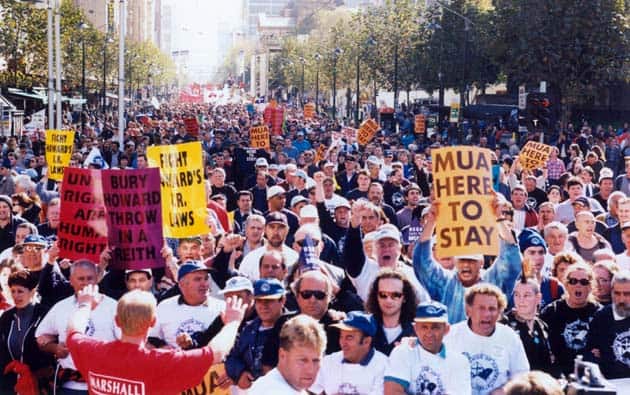The “We Quit” declaration by Extinction Rebellion in Britain that it will step back from disruptive, direct action to build a 100,000-strong rally on 21 April has ignited a debate about the best approach to fighting climate change.
XR rightly said: “Despite the blaring alarm on the climate and ecological emergency ringing loud and clear, very little has changed. Emissions continue to rise and our planet is dying at an accelerated rate.”
But in a shift that many have interpreted as an admission that direct action does not work, the statement added: “XR is committed to including everyone in this work and leaving no one behind, because everyone has a role to play. This year, we prioritise attendance over arrest and relationships over roadblocks, as we stand together and become impossible to ignore.”
Meanwhile XR in Australia has pledged to continue disruptive direction action, with groups in SA and Victoria focusing on the Tour Down Under bike race, which is sponsored by fossil fuel corporation Santos.
Effective
But do we need to choose between direct action and mass mobilisations? Socialists support both mass mobilisations and direct action to achieve change. And often the most effective movements combine both.
We also argue that movements of resistance will be strongest if they involve organised workers, who have the power to stop the capitalist system that puts profits before people and planet.
When wharfies employed by stevedoring company Patrick were locked out of work in 1998, thousands poured on to picket lines to defend them and their union, the Maritime Union of Australia. Some workers walked off the job to join the protests.
When the Liberal government in Victoria threatened to break the picket with police violence and water cannons, thousands stood firm, forcing the police to surrender.
People often fear that direct action and disruption will isolate activists and lose the “middle ground”. But defiance on the picket lines ensured that the struggle was in the news and allowed the MUA to get its argument out to millions. MUA members marched back to work, their union intact.
On 11 September 2000, activists up and down the country converged on Melbourne to protest against top corporate bosses at a World Economic Forum conference.
While some sections of the movement kept their distance, worried that militancy would lose public support, protest organisers called for direct action and mass mobilisation, telling the media that 10,000 people would surround the event at the Crown Casino building and shut it down—which is what happened.
Hundreds of bosses failed to get into the event on the first day. On the second, thousands of striking workers marched to Crown to join what became known as the S11 blockade.
The media interviewed protest organisers and the anti-capitalist message was heard and supported widely.
In November 2018, 200 teachers from more than 50 schools across Victoria and 150 teachers from 20 schools in Brisbane walked out to demand the government bring all children and adult refugees off Nauru and Manus.
The strike built on the momentum generated by mass protests across the country. Teachers wore pro-refugee T-shirts at school, often defying their principals or state governments. This in turn inspired similar actions by nurses, librarians, health workers and university staff.
The Morrison government buckled, bringing refugee children and their parents to Australia from Nauru.
Serious attempt
What all these examples had in common was direct action on a large scale, involving hundreds or thousands of people. They were also part of serious attempts to mobilise thousands more in less confrontational protests, and helped workers gain the confidence from a growing movement to move into action.
To rebuild a mass climate movement that can win demands like no new coal, oil or gas, 100 per cent public renewables and guaranteed good jobs for fossil fuel workers, we need to combine all those elements.
The campaign to stop Santos extracting coal-seam gas in the Pilliga is uniting Indigenous people, environmentalists and unionists around protests, rallies and potential union bans.
This month, Solidarity and XR members and other community activists joined the bus drivers’ picket line in Adelaide, showing the kind of unity that will be needed to win a massive expansion of public transport.
Rebuilding a large and militant climate movement can pose a challenge to the government, just as it did in 2019. That would give confidence that those at the top can be beaten.
The excitement, militancy and tactics of the climate movement could be brought into workers’ struggles. And, in return, the strength of such action can be a demonstration of where our power in society—and our potential to change it—lies.
By David Glanz






